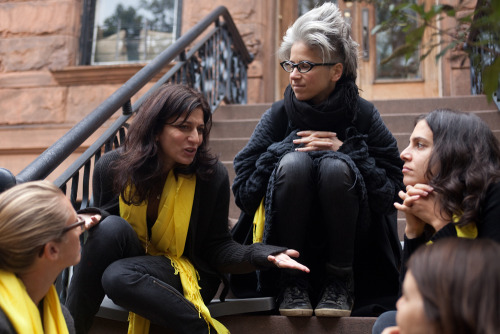#performance
She was a good girl all week so I let her cuddle up before we headed to the ball to show off her submission.
Post link
Our new studio! More information on the studio its name and progress will be published soon. But for now (and before we burst) here’s the headline.
Post link
The Performance Grammar Correspondence Hypothesis (PGCH) was put forward by John Hawkins (2004) as an explanation for why grammatical patterns and the frequencies of those patterns cross-linguistically are the way they are.
In essence, it says that linguistic constructions which are easier to process are more likely to be grammaticalised. Conversely, those which are harder to process are less likely to be grammaticalised. Furthermore, processing ease is hypothesised to underlie our preferences for certain constructions over others (where there is competition between constructions) in usage. Linguistic performance thus shapes the grammar.
Hawkins suggests that there are three principles behind the hypothesis. Simplifying horrifically:
Minimise Domains: this basically means make the distance between elements which go together syntactically and semantically as small as possible, e.g. if an adjective goes with a particular noun, put them as close together as possible.
Minimise Forms: this basically means make those elements mentioned above as small and as meaningful as possible, e.g. consider spoken English “I’mma be there” where “I am going to be there” has very much had its form minimised.
Maximise Online Processing: this basically means arrange those elements in such a way that a listener will be able to process the structure of what you’re saying in the most efficient way possible. This involves making structures easier to recognise but also avoiding potential misinterpretations of structure, e.g. “I looked the number up” – consider where you place the “up” as the object gets longer. “I looked the number of my friend who just moved in next door up” vs. “I looked up the number of my friend who just moved in next door”. If the object is going to be very long, it is better to put “up” straight after the verb so that the verb (and its idiomatic meaning) can be recognised sooner. When the object isn’t so long, as in “I looked the number up,” efficiency isn’t greatly affected.
Note that language users flout these principles all the time, e.g. for stylistic effect, and are not consciously aware of them.
Using these three principles, Hawkins’ theory makes some very strong and interesting predictions about the types of patterns found in the languages of the world, and about which patterns are more likely or unlikely to be found.
Reference
Hawkins, J. (2004). Efficiency and Complexity in Grammars. Oxford: Oxford University Press.
When people study language typology they study the ways in which languages vary. However, it’s more than just saying different languages use different words or these languages use very similar sounds. We study the ways in which structural features of languages differ (or are similar) and many go further asking questions about what the limits of linguistic structural variation are.
English speakers will know that in a simple transitive clause we start with the subject followed by the verb followed by the object, e.g. ‘Bob (S = subject) likes (V = verb) pizza (O = object)’, i.e. English has typically SVO word order. But are there other ways of arranging such a structure? Logically there are six ways: SVO, SOV, VSO, VOS, OSV, OVS. The next question that a typologist will ask is how are languages distributed across these possibilities. As a null hypothesis we might think that we would expect to find roughly equal numbers of languages in each group, but this is not what we find at all. SVO and SOV account for around 85% of all languages (with SOV being a bit more frequent than SVO). Adding VSO languages brings the total to around 95% of all languages. The question is: why is the distribution of languages so skewed?
Three broad types of answers suggest themselves as candidates (at least to my mind):
1) It could be down to chance – the distribution of languages today may represent a highly skewed sample. If we came back in 1,000 years we might see a completely different distribution. This approach is obviously not taken by language typologists. There is certainly something interesting about the distribution which demands an explanation. To write the pattern off as due to chance would be to miss potentially significant insights into the ways languages are structured and shaped.
2) The formal aspects of human language (perhaps as encoded by Universal Grammar) constrain the surface forms that human languages can inevitably take, i.e. variation is not limitless though it may be apparently vast.
3) The functional pressures that act on speakers and hearers every time they use language will affect which forms languages will prefer to take, i.e. structures that are easier to say and to comprehend will be preferred and so will come to dominate amongst the languages of the world.
Given the great success of generative linguistics in the past few decades, (2) is a very popular approach to take. However, many intuitively feel that the approach in (3) is ultimately more satisfactory as an explanation. Personally I’m inclined to think that if we can explain surface variation in terms of performance preferences, this is a good thing because it means there is less for the formal approach to account for. Furthermore formal aspects of language are most often thought to be all-or-nothing affairs. If a grammar rules out a particular structure, that structure cannot exist, whereas if performance factors disfavour a particular structure, that structure will be either non-existent or rare.
But are (2) and (3) incompatible? You might think so given the distinction that’s often made between competence and performance. Many would not consider performance factors as relating to language proper – it is extra-linguistic and not something the linguist should be looking at. But the fact is that all the (overt) language that we use to construct theories of both competence and performance is being ‘performed’ in some way (either spoken or written or signed). I think there may well be limits on variation set by formal properties of human languages (which will account for some of the totally unattested structures) but others will be set by performance. And then maybe others that are to do with physics and biology more generally (here I’m thinking more of phonological typological patterns).
For now then it may be useful to adopt either (2) or (3) as an approach to language typology with the aim of seeing how far they can go, but always with the ultimate aim of putting the two together in the end for a more comprehensive account of why languages are the way they are.
Ayer por fin coincidí después de un tiempo con una de las mejores artistas que tenemos en España, mi Sharonne. Un talento que no tiene nombre y como persona ni te cuento. Que grande eres @hellosharonne !!! No se puede ser más artista #tragaperra #show #arte #transformismo #cantante #actriz #musica #night #sharonne #showwoman #performance #artist #artistas #dragraceespaña #dragrace #showman #lavoz #singer #singers #musicacontemporanea #artecontemporaneo #holidaybyobbio #espectaculo #antoniorueda (en Discoteca Holiday Sevilla)
https://www.instagram.com/p/Cbkb9ruj6yY/?utm_medium=tumblr
Post link
❤️ #Love #Monday
Weekly #horoscope #reading to Regina Coeli #jail.
January 2017, on monday. Horoscope: #PaoloFox. Read by: Natalia A. © @elfo_ahhaahha & @rubkandy #art #performance #audio #wall #trespassing #inthemoodforloverome #rubkandy #elfo_ahhaahha (presso Rome, Italy)
Post link
Online Now! ❤️LOVE MONDAY © @elfo_ahhaahha & @rubkandy
#YouTube link:
#Vimeo link:
#elfo_ahhaahha #rubkandy #rockthewall #limits #landscape #performance #urbanart #streetart #trespassing #voice of #love (presso Gianicolo-Faro)
Post link
Ahoy comrades, arrr..!! ☠️
It’s another illustration and of mine that was used in VVGO (Virtual Video Game Orchestra)’s production: this time it’s “Adventure Awaits!” from Sea of Thieves, ayee!
Check our music sea voyage out here, mateys! -> [link]
_
You can find me here too: Deviantart|Instagram|Facebook|Twitter|Youtube.
If you’re interested: My page|Commissions|Redbubble Shop|Etsy shop.
Artist Support: Ko-fi
Post link
Soon comrades! So soon, arrr..!! ☠️
VisitVVGO (Virtual Video Game Orchestra) on Youtube on Saturday, December 18th 3:00PM UTC-8!
This time I was in charge of promotional art and graphics again! And of course some of you will spot me singing there too! ;>
Post link
“Between the Door and the Street” (2013) by Suzanne Lacey
Something I noticed that was pleasing to the eye is that while people who’ve come to observe are on the inside of the yellow tape because they want to listen, they do not overstep their boundaries and allow the women to share their perspectives and experiences. In addition—and I’m unsure of Lacey’s intention—I feel that the scarves work as a microphone to emphasizing who was meant to speak while also serving as a silencer, being that scarves can suffocate if worn too tight.
Post link




©4-velvet, baesuji
Red Velvet Joy and former Miss A Suzy, “Hush”


























